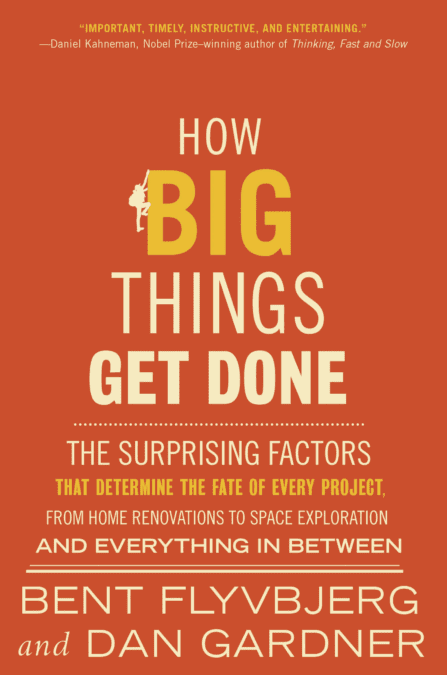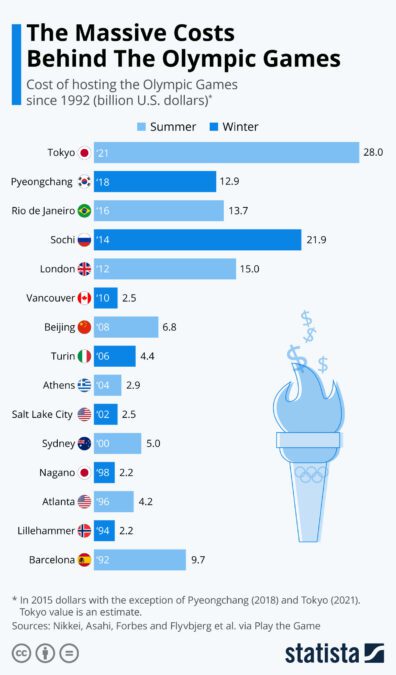Jacquelyn Hole and Bent Flyvbjerg

Think slow to ensure your project succeeds
What do the movie studio Pixar and the Empire State Building have in common?
They are both famously successful endeavours that exemplify what Professor Bent Flyvbjerg calls the ‘think slow, act fast’ principle of good project management, one of 11 heuristics he identifies as fundamental to better project leadership.
Professor Flyvbjerg is the leading international expert on megaprojects. His latest book, co-authored with Dan Gardner, is How Big Things Get Done: the Surprising Factors Behind Every Successful Project, from Home Renovations to Space Exploration.

“Pixar captured my attention because they’re great movies, but also because they have done 20 plus blockbusters in a row,” Professor Flyvbjerg said.
Adapting the title of Daniel Kahneman’s best-selling book on cognitive heuristics, Professor Flyvbjerg says thinking slow and acting fast is a sound approach to any project, large or small.
Pixar has produced more than 26 highly successful feature films, including Toy Story and Monsters Inc, by usually following an eight-stage script development process before filming starts.
“This is the thinking slow phase at Pixar (lasting) about two years,’ Professor Flyvberg said.
This slow planning stage allows for iteration, learning experiences and productive feedback during a relatively inexpensive phase of the project.
“And then they start shooting and that’s the acting fast.”
A fast production schedule closes the window during which things can go wrong, helping to minimise risk during the high-cost phase of the project.
“The shooting is on these expensive animation computers. They hire-in famous Hollywood actors who are doing the voiceovers for the final version of the film. They bring in expensive composers who are composing the music for the film and so on – but only in this (final) phase.”
Replication reaps rewards
The Empire State Building took less than two years to build and was 17% under budget. It exemplifies another of Professor Flyvbjerg’s project rules – ‘build with Lego’.
“They used a modular design,’ Professor Flyvbjerg explained.
“They had completely designed the building from top to bottom, and they did it in a way where the majority of floors were exactly like other floors. (The builders) said ‘we actually did not build a skyscraper, we just built the same floor 100 plus times, and then we stacked them on top of each other’.”
Flyvbjerg says all project managers – including those running software and IT projects, can build ‘positive learning curves’ into their process by the simple habit of replication.
“You need to do things in a way where you replicate something over and over. Because when you do that you get what we call positive learning curves. It means that you get better and better, you get faster and you get cheaper at whatever you’re doing. And that’s exactly what happened on the Empire State Building.”
He’s got a big list
Drawing on a database of more than 10,000 projects Professor Flyvbjerg has ranked types of projects from the most successful to the least.
The “top performers, at the good end of the curve” are solar farms followed by wind power plants and then conventional power plants such as oil, gas and coal.
“Solar farms are the most repetitive project. It’s a solar cell put on a panel. And you put the panels in an array, you have many arrays, you have a solar farm. You can build a billion-dollar solar farm really fast. And you can keep it on budget.”
The worst performing projects are nuclear power plants, IT and defence projects.
“There’s something about the defence industry. They have a bunch of bad habits, let’s put it that way. And they keep being allowed to reproduce the bad habits, maybe in a sense, because they are more protected. They may be a bit of a different type of animal (but) that doesn’t mean that you shouldn’t be able to deliver them in an efficient manner.”
Near the bottom of Professor Flyvberg’s list, the Olympic Games.
“We have data going back to 1960. Not a single Olympics has been on budget.”

Professor Flyvberg extended a special offer to the organisers of the Brisbane Olympic Games.
“I’m encouraging Brisbane, take this opportunity to become world famous by being the first city that actually delivers the Olympics on budget, and I promise you will be in my next book, if you do that.”
Not many of us get to organise an Olympic event, however Flyvbjerg says his rules apply to projects large and small, corporate, or personal. Meaning, only proceed with your home renovation dream, if it has “positive learning curves”. How many home renovations can guarantee that?
Professor Flyvbjerg’s favourite buildings are the Sydney Opera House and the Guggenheim Museum (Bilbao).
“They might be the two greatest buildings of the last 100 years. This is what great art does, it lifts you up, and Sydney Opera House certainly lifts me up when I visited it.”
However the story of the building of the Sydney Opera House is a “modern Greek tragedy”. Professor Flyvbjerg, who like the Opera House architect, Jørn Utzon, is Danish, says the tragedy is twofold.
The project ruined Utzon’s career. And the world was deprived of other potential masterpieces from this precocious architect, who was just 38 when he undertook the commission of his life.
“You can’t build things so that you destroy the careers of the architects, that’s not okay to be so inconsiderate in the way you do things.”
By contrast, Frank Gehry was 62 with more than 30 years’ experience as an architect when he undertook the Guggenheim Bilbao, which was delivered on time and on budget. Professor Flyvberg emphasises the importance of experience in achieving project success.
Gehry also tended to work with the same construction team. The Guggenheim project – which elevated Bilbao to international city-status – exemplifies two of Professor Flyvberg’s heuristics for better project leadership: ‘hire a master builder’, and ‘get your team right’.
Image: Kit Suman
Jacquelyn is the media producer and the content editor at Sydney Business Insights.
Bent Flyvbjerg is the first BT Professor at Oxford University and the VKR Professor at the IT University of Copenhagen. He is the author of several books including How Big Things Get Done, Making Social Science Matter and Megaprojects and Risk.
Share
We believe in open and honest access to knowledge.
We use a Creative Commons Attribution NoDerivatives licence for our articles and podcasts, so you can republish them for free, online or in print.







